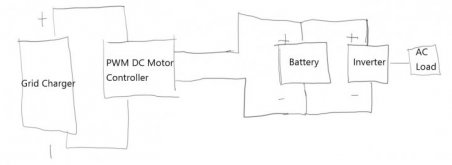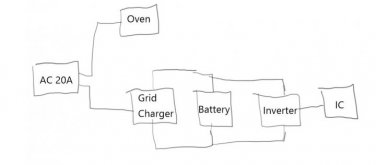discreetlyspeaking
New Member
- Joined
- Nov 7, 2020
- Messages
- 16
Hello,
As an exercise to understand this stuff better, I've been trying to figure out how to build a DIY peak shaver - reducing grid power draw during the day in favor of battery power and use grid power at night to charge batteries when electricity is cheaper. I have a feeling that the answer lies in current or power limiting the grid charger. I found some inexpensive PWM DC motor controllers - would the following below work?

I'm also open to something you can buy off the shelf that limits the power output from the grid charger. The grid charger is simply a commercial power supply with voltage control and a maximum current limiter.
As an exercise to understand this stuff better, I've been trying to figure out how to build a DIY peak shaver - reducing grid power draw during the day in favor of battery power and use grid power at night to charge batteries when electricity is cheaper. I have a feeling that the answer lies in current or power limiting the grid charger. I found some inexpensive PWM DC motor controllers - would the following below work?

I'm also open to something you can buy off the shelf that limits the power output from the grid charger. The grid charger is simply a commercial power supply with voltage control and a maximum current limiter.



